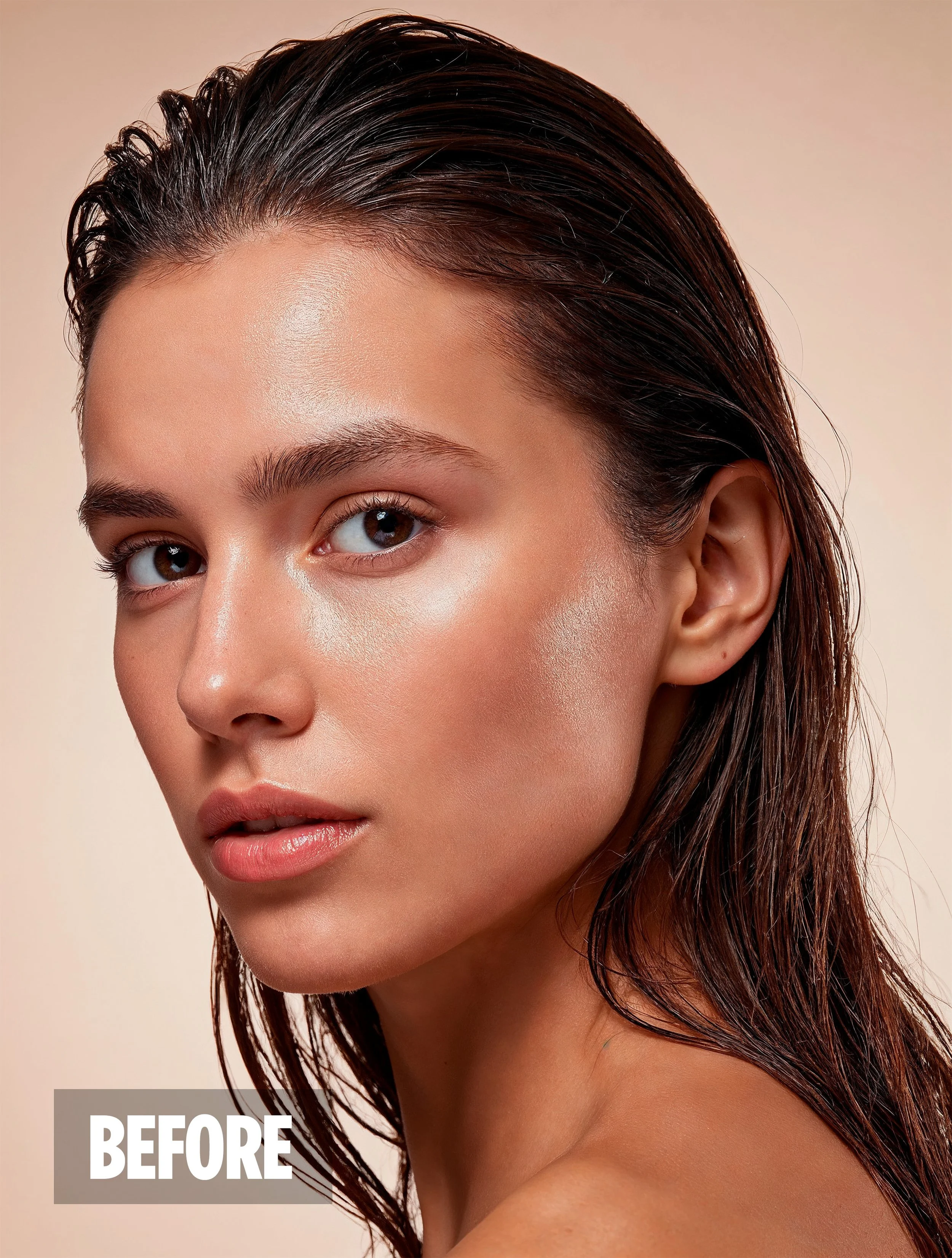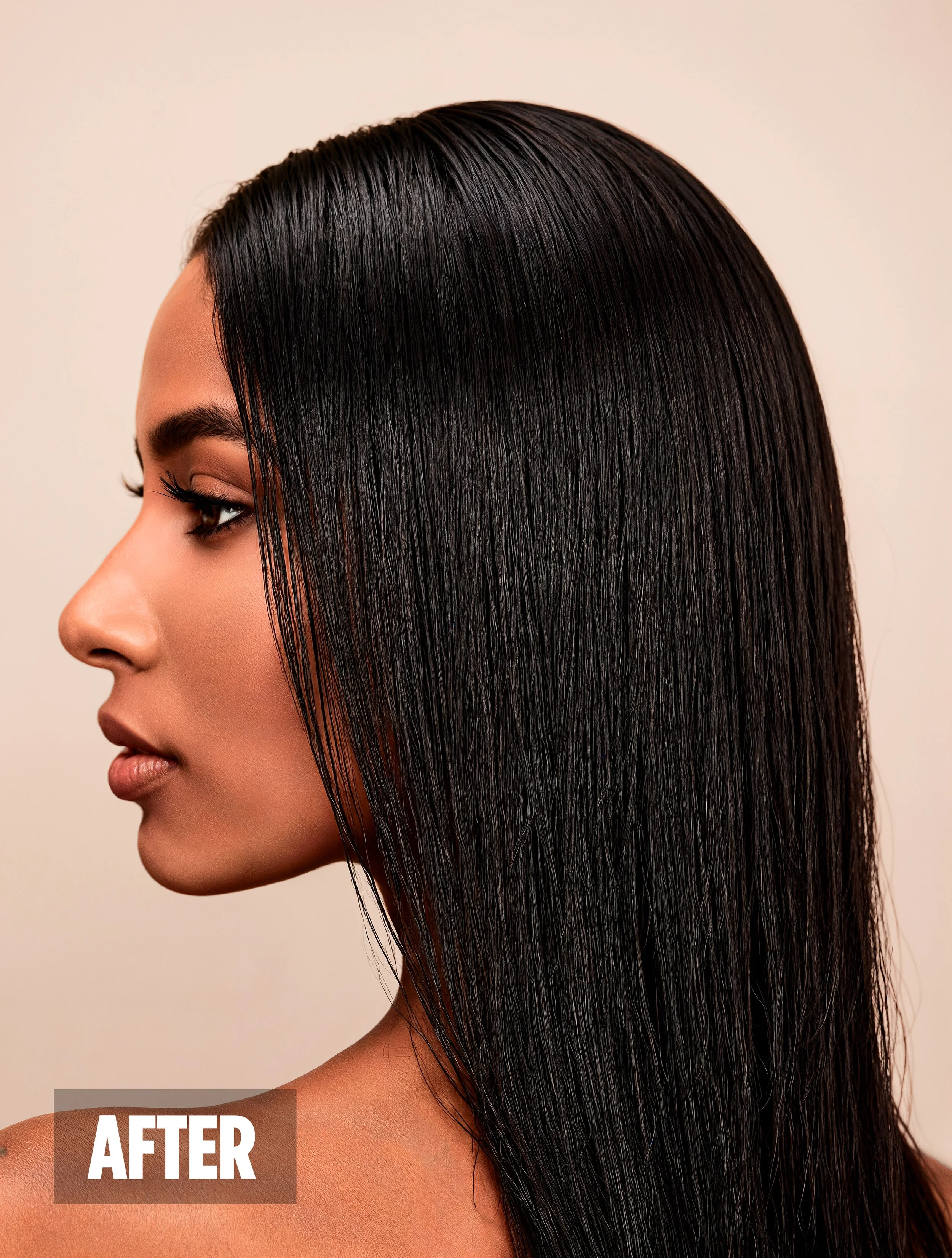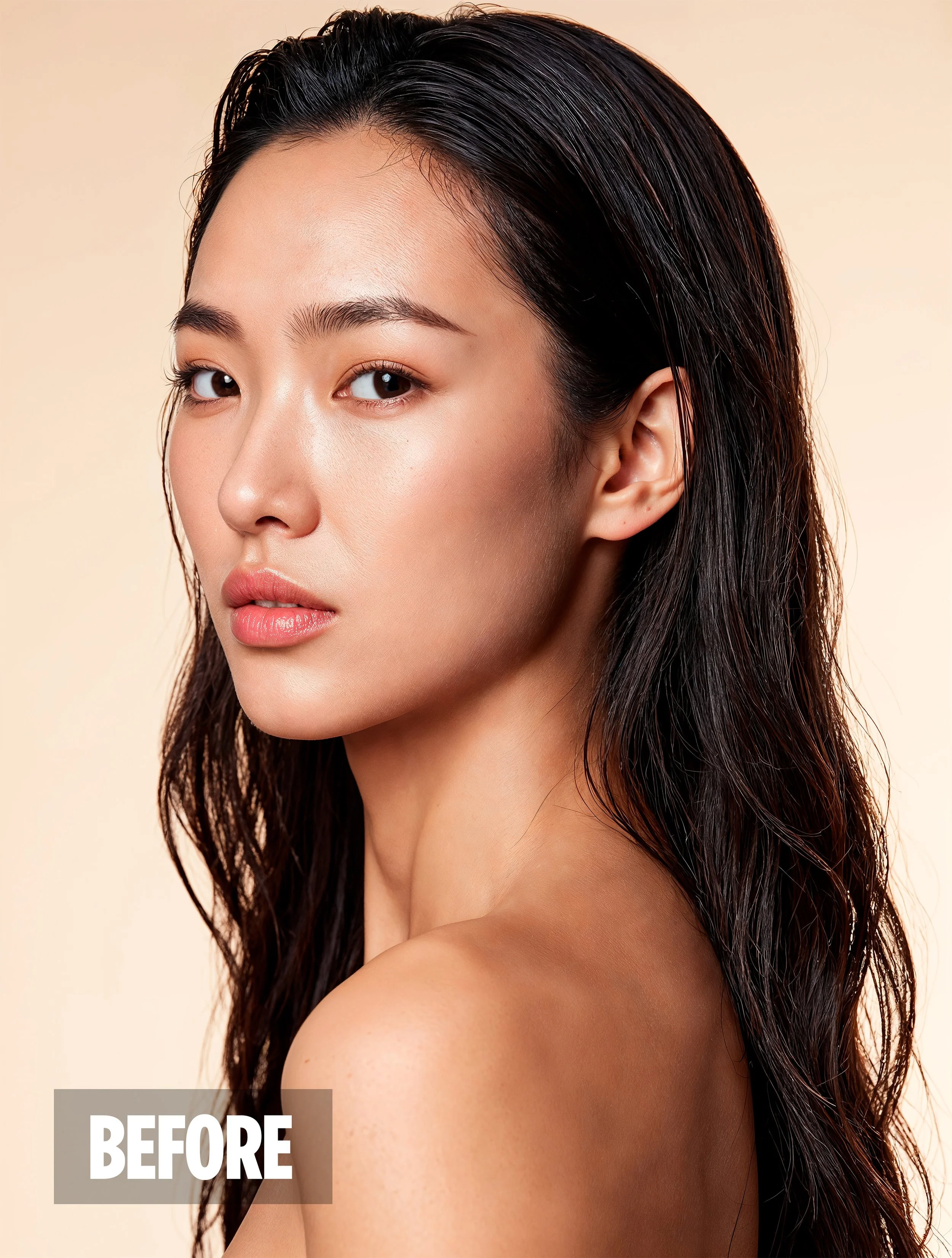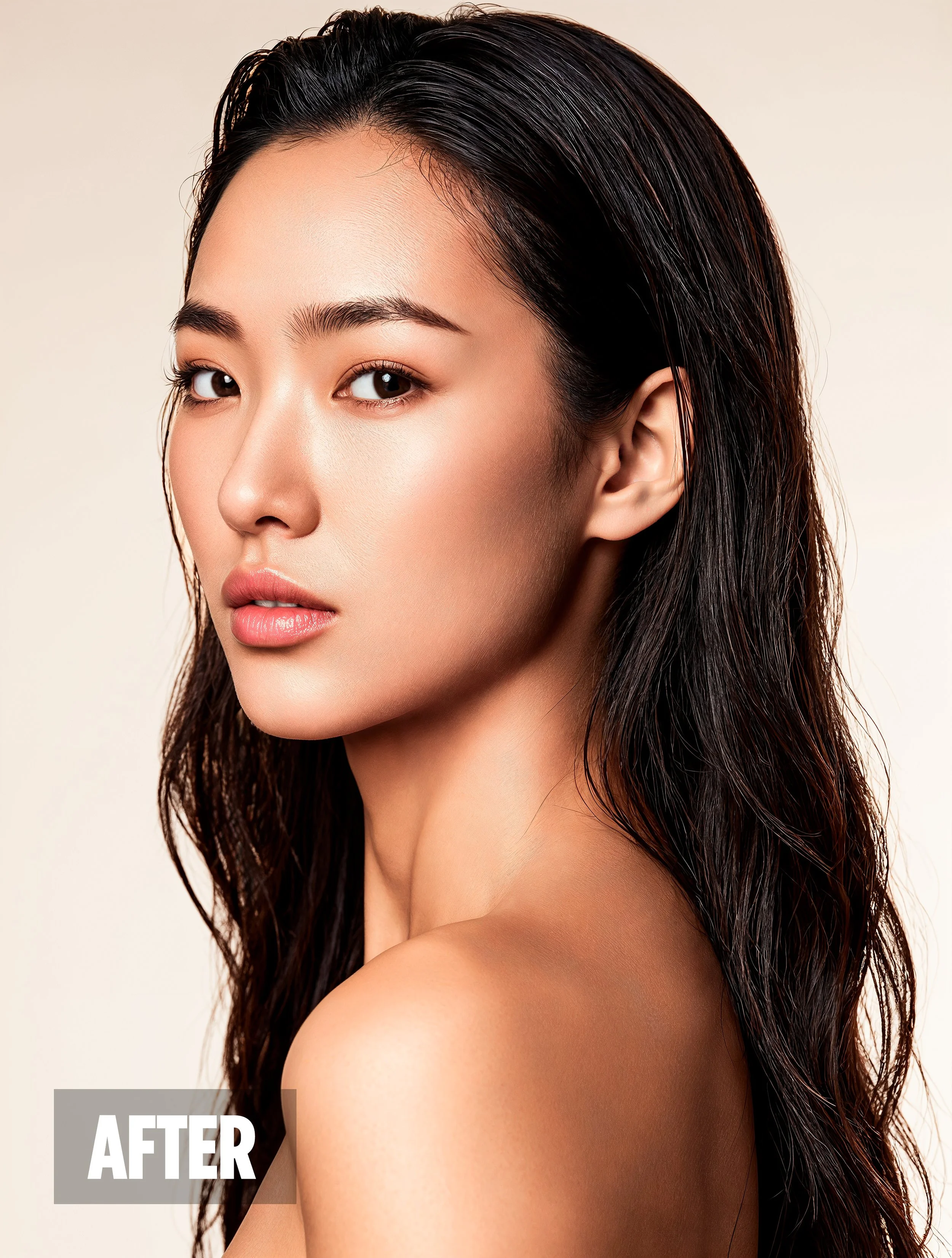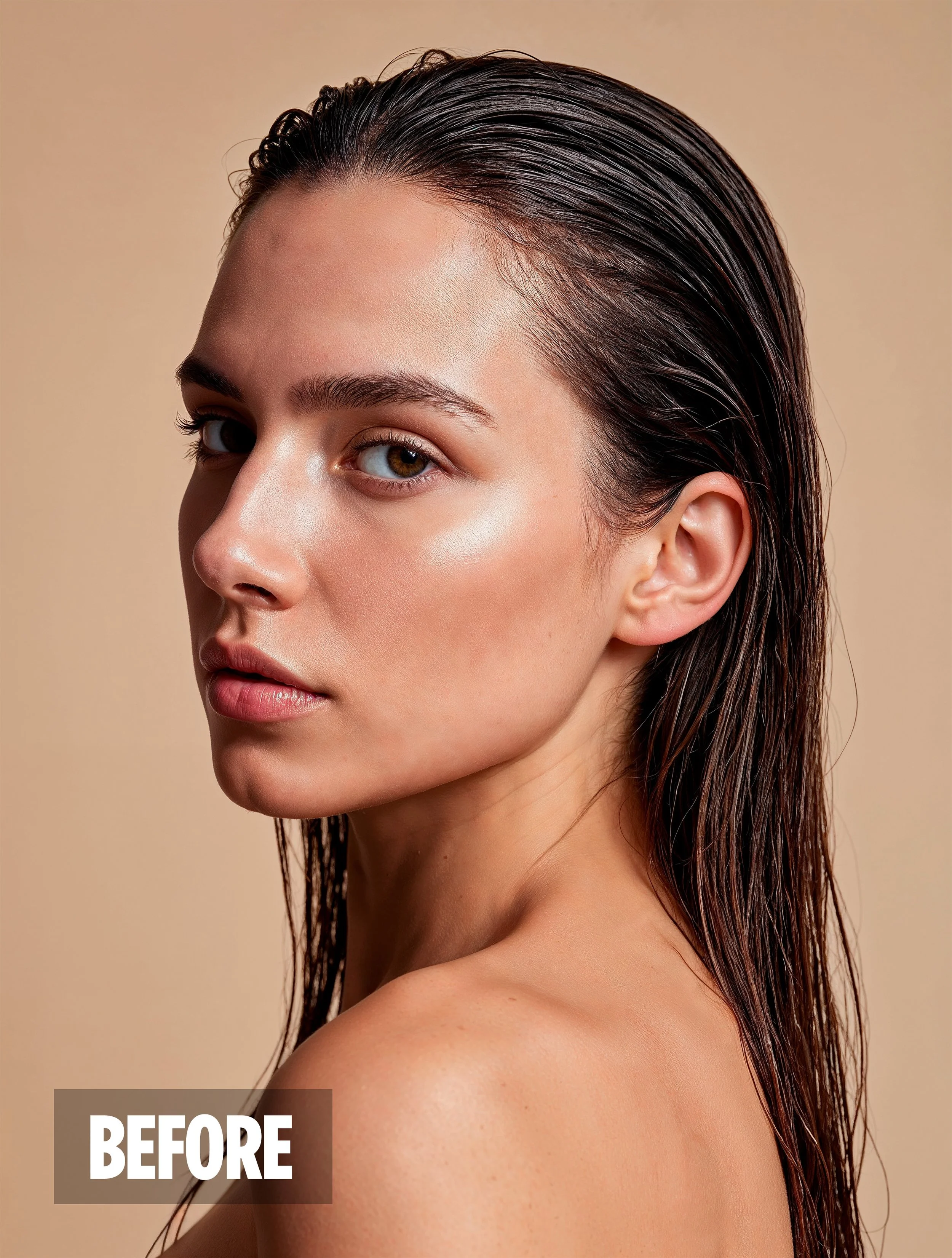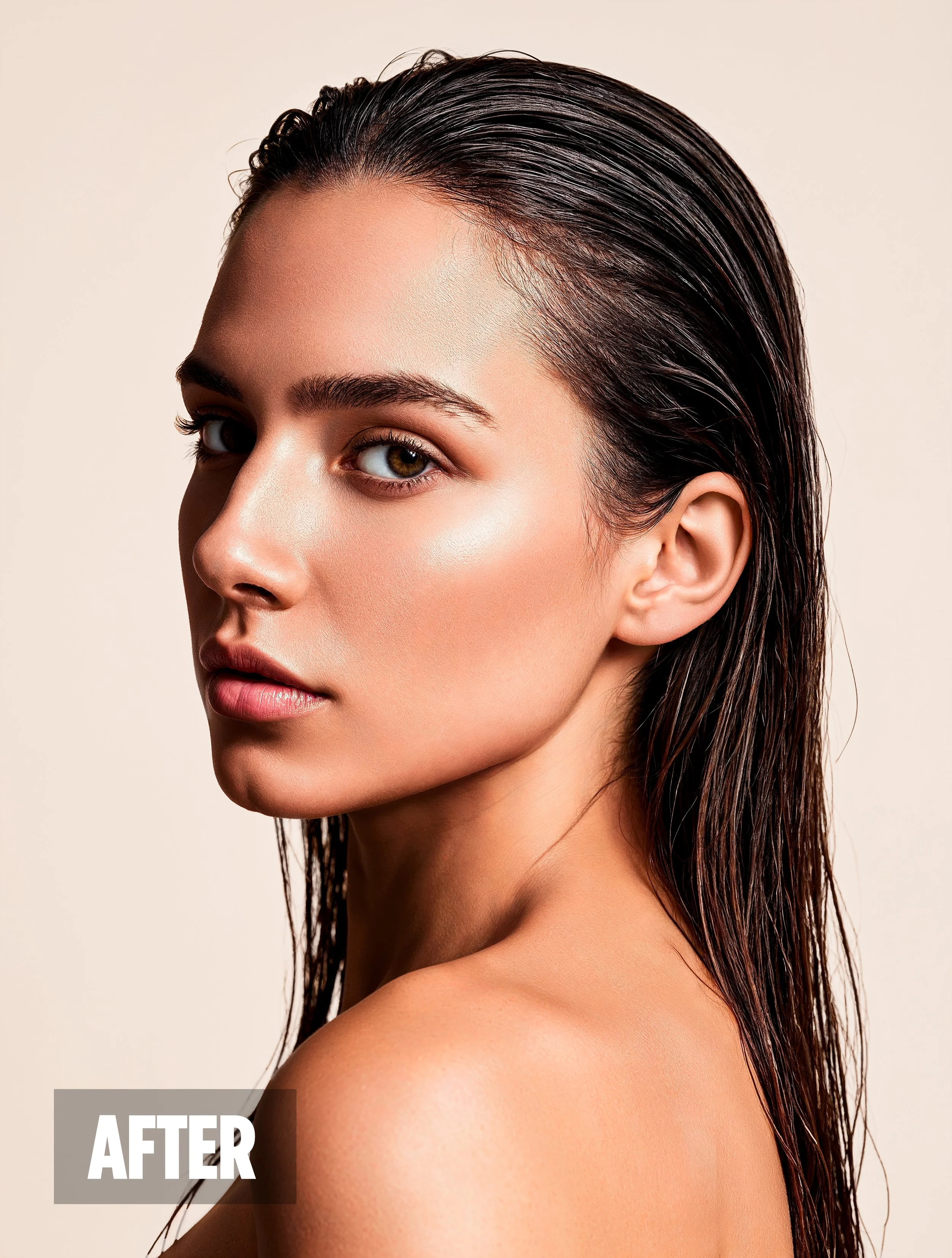MYSTIC AI + RETOUCH4ME – USING AI on AI
TECHNICAL INFOS
Concept & Creative Direction Marc Perino
AI Prompting & Retouching Marc Perino
Tools used Mystic AI (2.5 Beta) + Retouch4me (which are on sale right now)
expand the text below by clicking on the »+« icons
* please read the fine print on the promo page
click on the images to enlarge
-
The intersection of artificial intelligence and photography has opened up new horizons for creative professionals. Recently, I experimented with a groundbreaking workflow that combined Mystic AI by Magnific.ai (which was acquired by Freepik lately) and the Retouch4me suite of plugins for Photoshop.
By using them together, these tools helped me produce stunning, photorealistic beauty headshots of entirely virtual models – images that could easily rival traditional studio photography. But first let’s dive a little deeper into what tools I used for this experiment and why I use them.
-
In the world of AI generated images the speed in which the technology evolves has to be counted in »dog years« rather than normal years. In my many conversations with my fellow AI creator/filmmaker Mark Wachholz (also visit his YouTube channel) we were updating each other about new developments in this field and the news about improvements and changes were coming in weekly rather than monthly. Sometimes hourly.
When I started out creating artificial imagery the results were initially interesting and fascinating. But on further inspection most of the time you could spot the errors or inconsistencies that we all remember too well when a person has too many fingers or weirdly figured limbs. That is still the case for most AI imagery but it gets better literally every week!
Dall-E from Open AI never covinced me from an aesthetics point of view. It was too »cartoonish« for my taste. So I started out like millions of others with Midjourney which I used over the last 1,5 years. Although the images were getting better in each version I was never 100% happy with the results as I always strove for realism rather than futuristic Blade-Runner-like landscapes – which I also did here. And I know while I am writing these words new improvements will be made every minute and therefore parts of this text will become obsolete very soon. :)
Since the resolution of AI images were poorly in the beginning people started to use upscalers in order to improve the image sizes. Like many others I used – and still use to this day – the Topaz Labs upscaler Photo Ai which has quite a good algorithm. But it »cannot polish a turd« as the Americans say. Meaning that if your original image has certain errors or inconcistencies with reality it will just »improve« or magnify those defects. So this was one part of the workflow where the realism of an image might come to an end.
But then at some point I was introduced to this new kid on the block called Magnific.ai which was made by a couple of spanish developers that somehow created a »magic sauce« that you could just »pour over« your already AI created images like a new layer of realism – they called it »creative upscaling«.
In essence you upload your AI images – or any kind of photography for that matter – and the software will upscale your images and make it look more real or hyperrealistic by adding tons of resolution (up to 16x), detail and texture to make it resemble more like a real photograph.
Of course since it was called »creative upscaling« it was never intended to transform images that represent the »truth« – it was rather used to make the images more realistic. Although that might sound contradicting
what I mean by that is that the upscaling can distort or change details and aspects of the original image to a degree that has nothing to do with the original anymore – especially in human faces.So it should NOT be used to upscale images e.g. for a passport photo. Otherwise the face recognition software on the immigration booth at the airport would assume that you are a different person than the one in your passport. It is only there to make a photo seem more realistic for creative purposes and when the outcome should not represent the likeness of a real existing human. For example in advertising in which images never told the truth but presented an »exaggerated reality«.
Now for months Magnific AI was solely used for this creative upscaling. But in recent months they introduced their own image generative AI called »Mystic AI« which creates far more realistic looking images than Midjourney in my opinion.
Lately they also added 2 new AI models called »super real« and »editorial portraits«. The former is used to generate, well, super real images which consist of objects and/or landscapes. While the latter model is more appropriate for creating head shots of »humans« that are far more realistic than what I have seen in any other AI software. For the first time using AI I could not distinguish images of real humans from the AI generated »humans«. The line definitely was blurred massively.
-
Roughly 2 years ago I became aware of a company called »Retouch4me« that promised – by using their smart AI plugins – I could cut down the creative retouching process of photographic portraits (of real humans) from hours to literally minutes.
Since at that time I was professionally retouching tons of photos I was eager to try them out on real jobs but the rather high price of each of these plugins held me back – but not for long. When another job of 40-60 images were announced in my retouching pipeline I dreaded the idea of spending so much time on them and bought 4 of the plugins to test them in my workflow.
I have tested lots of other retouching products over the years but I was always disappointed by the crudeness and the overpolished look these other software apps produced. So I kept on going with the old manual way of retouching – which I am still capable of.
But after I saw the results I was blown away from the meticulousness and subtlety with which Retouch4me handled the images. These plugins are designed to automate the most repetitive and time-consuming aspects of retouching, such as skin smoothing, blemish removal, and color correction, while maintaining a natural, professional look. Each plugin in the suite focuses on a specific task – like refining skin tones, enhancing facial features, cleaning backdrops or removing dust from clothing – offering photographers and editors unparalleled precision and control.
Using these initial 4 plugins made me instantly buy all of their remaining 8 plugins in a heartbeat. Knowing I could not only save hours in retouching but I would have a newly raised bar of quality to start from. I would not just cut down time but I could expand my retouching game to a whole new level which was impossible before because of time constraints. You see, clients don’t want to pay for more time per image. But if they get a higher quality retouch for the same amount of time aka money – it is a game changer for me.
-
As a natural progression I thought – why not combine the process? So in this experiment I wanted to create virtual models with Mystic AI and retouch them – like portraits of real human beings – with the help of the Retouch4me plugins.
When you see the images in this article you might think – »wait a minute, those models look almost too perfect«. Yes, that is true but this kind of imagery has been around for years if not decades in advertising. Think of the packaging of high end shampoo or shower gel. In the past those images were mostly »generic models« with not too many recognizable facial features. But they were classically produced in a studio with high end photographic equipment.
So Mystic AI served as my virtual photo studio, allowing me to generate hyper-realistic beauty portraits online. The production process completely bypassed traditional photography’s logistical hurdles. No need for models, makeup artists, stylists, lighting setups, a physical camera, a studio or food catering – just an infinite digital canvas powered by AI.The headshots Mystic AI generated were rich in detail, from luminous skin textures to intricate highlights on the wet hair. This kind of photography normally takes hours in the studio and involves dozens of people. And however, as impressive as these images were, they needed that professional finishing touch to transform them into flawless, high-end beauty shots which we know from the shampoo advertisings.
-
Having used the Retouch4me plugins for 2 years now to retouch portraits of human subjects, I was excited to apply the same tools to these AI-generated headshots. The process was pretty seamless and only took a 2-3 minutes per image – running all 12 plugins.
Since I used their local on-device AI plugins in Photoshop it depends on the power of your machine how long it will take. I use a Macbook Pro M1 Max with 64 GB of RAM which is up to this day very powerful. I guess if you used it on an M4 Max with similar or more RAM the results can be a little bit faster. The working resolution of the images was roughly 16-20 megapixels – normally I work with 30-45 megapixels.
A few months ago Retouch4me also introduced the cloud retouching option. This price model is for people who don’t want to spend so much money on the local plugins. You can buy credits and use them up for your retouchings. You can still use the free Photoshop panel in your classic user interface. The only difference is that the retouching will happen in the cloud. Your images will be sent to their servers and back again. If you have to retouch a lot of images you can also do batch processing with their Arams software – a standalone application which serves as a sort of retouching pipeline.
For some details like the gaps in the hair of the models I used generative fill in Photoshop and/or traditional retouching techniques. For me the combination of Mystic AI and Retouch4me resulted in beauty headshots that felt indistinguishable from traditional photography. The virtual models appeared alive, their skin radiant, their features perfectly balanced, and the overall presentation professional and polished.
Now you could argue that they might look a little bit overpolished but for this kind of experiment I felt the results were almost perfect. I intentionally tried to blur the line between high end retouching of traditional photography and AI created imagery. I think you could use any of those final images on a shampoo packaging and the end consumers would not know if there was a human or an AI generated person on it – nor would they care.
-
This process highlights the limitless potential of AI in beauty photography. While Mystic AI laid the foundation by creating photorealistic virtual models, the Retouch4me plugins added the finishing touches that elevated the images to a higher professional standard. What’s particularly exciting is how this workflow can save time and resources. The ability to create photorealistic images without a traditional photoshoot – and then perfect them with Retouch4me’s AI-powered precision – opens up endless possibilities for photographers, editors, and digital artists.
Of course you could make the counter argument that this kind of workflow also destroys a lot of traditional jobs of photographers, models, hair & makeup artists, stylists, caterers, studio owners, etc… and that is absolutely true. There will be – and is already happening – a significant shift in these departments all over the world in many businesses.
But we had that kind of change in the past multiple times. Think of the transition of silent cinema to the »talkies«, the change from cinema to television, the invention of desktop publishing and the invention of the internet. All these changes were highly transformative and disruptive. And all of them created new job opportunities while destroying traditional jobs at the same time. So this is nothing new.Also I still believe in real photography. Think of event and wedding photography where you want to capture real moments that happened in time. Although AI might be able to recreate these moments it would defeat the original purpose of an event and their photographic manifestation.
But »generic« advertising and stock photography will soon be replaced by AI imagery. In fact this is already happening. For years, I’ve worked to perfect the art of retouching human portraits. This experiment with AI-generated imagery felt like a natural evolution of that craft. The combination of Mystic AI and Retouch4me allowed me to create beauty headshots that not only matched but, in some ways, surpassed the quality of traditional photography. As AI technology continues to advance, I’m excited to see how tools like these will shape the future of our industry.


